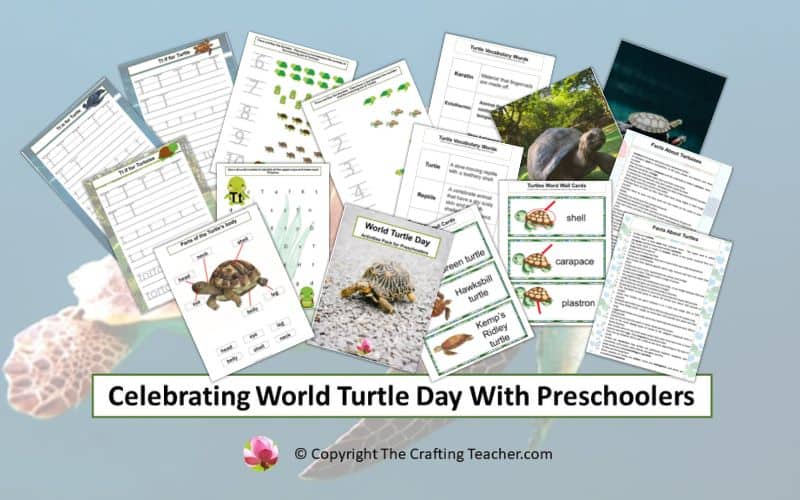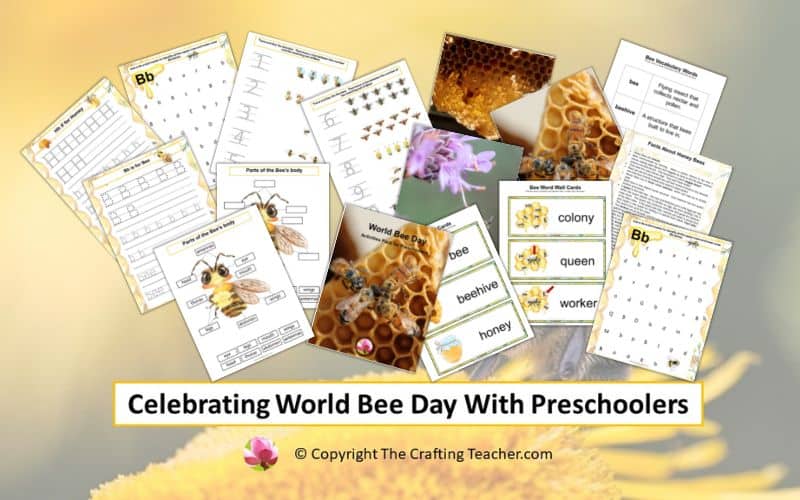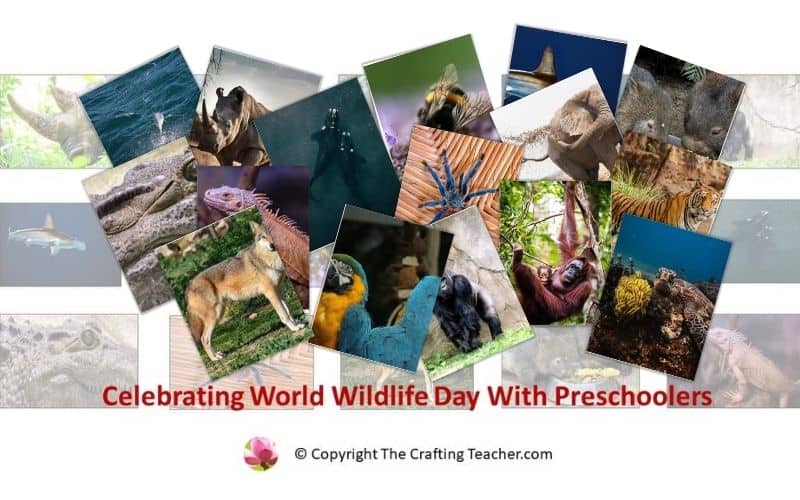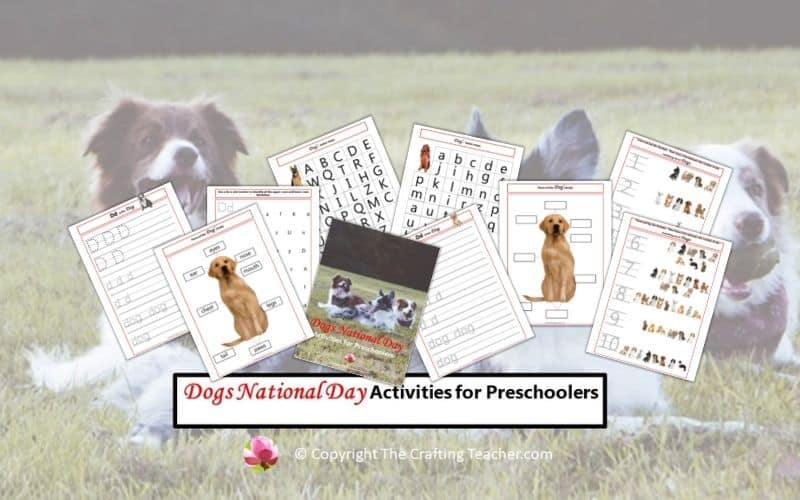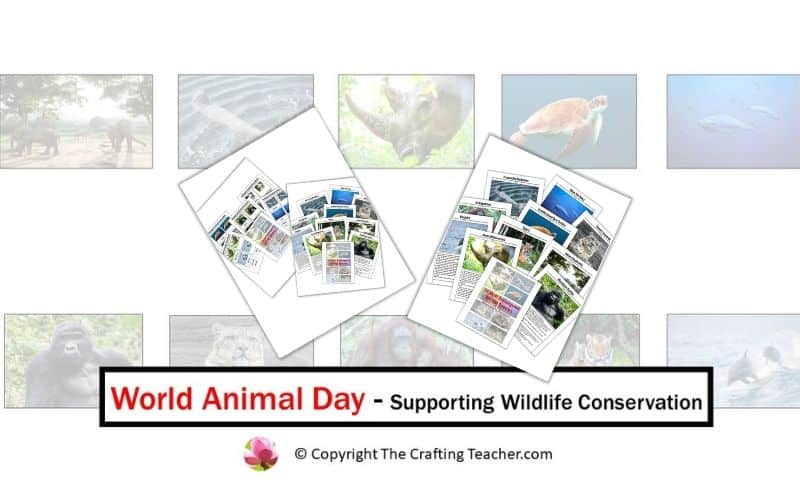Celebrating World Turtle Day With Preschoolers
Affiliate Disclosure: “This post contains affiliate links, which means I receive a small commission, at no extra cost to you, if you make a purchase using those links.”
World Turtle Day is an annual event that occurs every May 23 across the globe, to educate people about turtles, tortoises, and terrapins, and what they can do to protect them and their habitats.
These gentle reptiles play an important role in the ecosystems they inhabit. Among turtles and tortoises’ contributions, we can mention that they feed on dead fish that wash up on the beaches, and dig holes in the ground that are used by other animals, maintaining an ecological balance.
Unfortunately, many species of turtles and tortoises are on the brink of extinction or endangered due to human activities, and we must raise awareness of the threats that they are facing, and involve our children, to become the future protectors of these and other animals and their habitats.
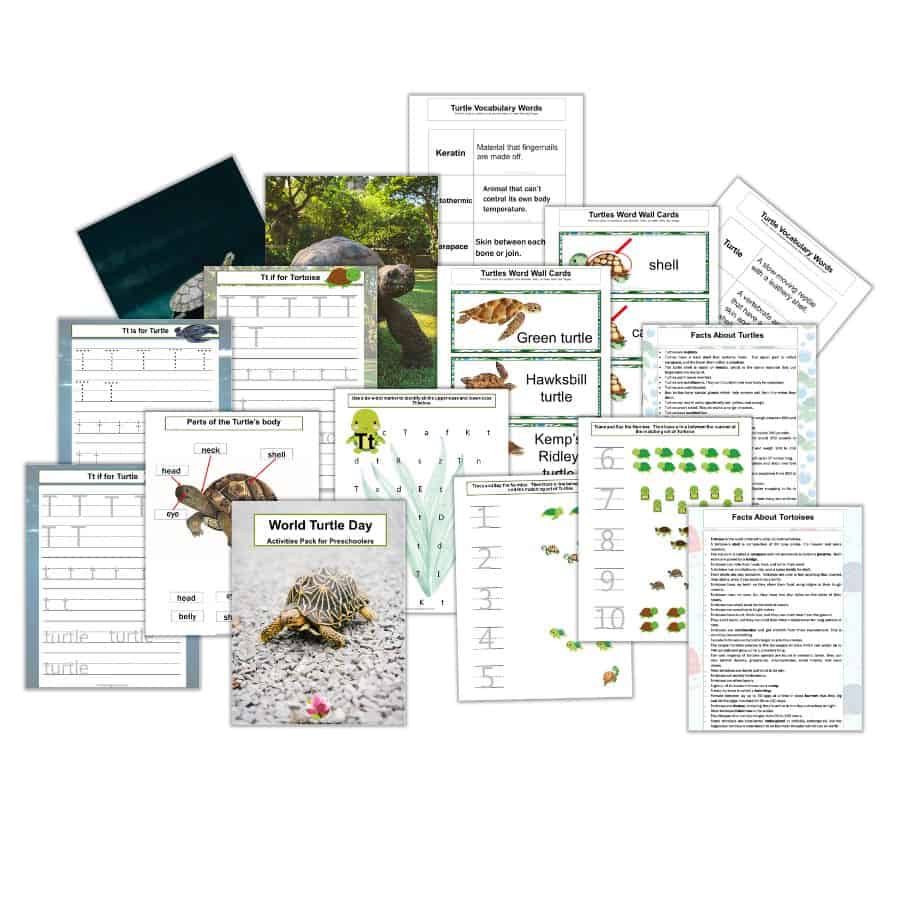
I have included a FREE 31-page long World Turtle Day activities pack that includes Literacy, Science, Math, and Fine Motor Activities for your preschoolers, which can download at the end of this post.
History of the World Turtle Day
This day was celebrated for the first time in 2002 by Susan Tellem and Marshall Thompson, a married couple of activists and founders of the American Tortoise Rescue. The main goal of this organization is to create awareness of the critical situation of these animals and assist local law enforcement in guarding their natural habitats and caring for the sick ones.
They also organize charities and work around the world to protect these incredible animals. Even when turtles and tortoises are not the same, this day is dedicated to celebrating and protecting them both.
Even when turtles, tortoises, and terrapins are not the same, this day is intended to celebrate and protect them all. To get better informed, it is important to distinguish some important differences between them since they look alike. The main differences are:
- Turtles mainly live in the water, while tortoises only live in dense jungles and grasslands, and terrapins are semi-aquatic, meaning they spend part of the day on land and part in the water.
- Turtles live up to 40 years, while tortoises can live up to 300 years.
- Turtles’ shell is mostly flat, while tortoises have domed shells, and terrapins’ shells are a mix of both.
Teaching these differences is one of the educational activities that World Turtle Day promotes. The other organization that creates educational material for kids and adults about these reptiles is the Turtle and Tortoise Preservation Group (TTPG).
The TTPG also provides advice to turtles, tortoises, and terrapins’ breeders and helps them keep them safe from extinction.
What You Can Do to Protect These Reptiles
There are many things that you can do, and remember that every little bit helps. Some of these things are:
- Donate to turtle conservation centers like the American Tortoise Rescue or the Turtle and Tortoise Preservation Group, even if is just a few dollars. Every little bit helps.
- Reduce or avoid entirely the use of chemicals like pesticides. Unfortunately, these chemicals used at home end up being dumped contaminating freshwater, and have terrible effects on turtles, tortoises, and other animals, not only aquatic but all of those that drink from it. Additionally, when reaches the ocean, this contaminated water poisons those waters and kills corals and other ocean life.
- Adopt a turtle or a tortoise from a rescue shelter or even Petfinder.com, instead of buying one from a pet store. These animals are easy to care for and don’t need expensive veterinarian care.
- Find out if there is a turtle or tortoise shelter, rescue center, or even the zoo in your city, and volunteer to help take care of them. These centers rely on donations and free labor, and can always use extra help.
- Use your social media to create awareness of the dangers these reptiles are facing, and how people can help them and protect them against their extinction.
- Avoid the use of plastic materials and/or a beach or park cleaning campaign to protect your local wildlife and their ecosystem.
- Help any turtle or tortoise you see on the street to go across if you think it’s in danger of being hit by a car. To avoid any danger to yourself, especially if it is a snapping turtle, find out the best techniques to use from the Turtle Rescue League.
- Never pick up a wild turtle or tortoise to take it home. You will be separating this animal from its natural habitat and will create harm to it, instead of helping it.
Facts About Turtles, Tortoises, and Terrapins
Turtles
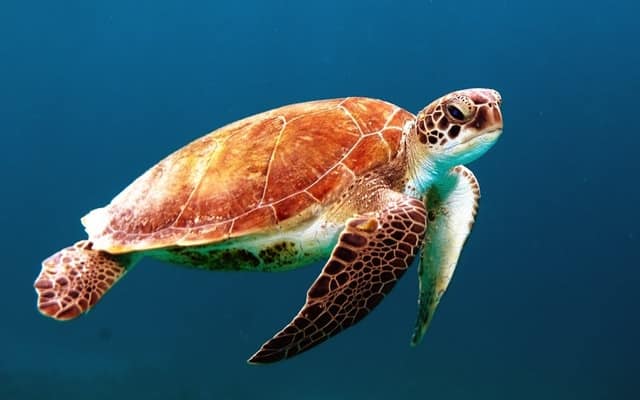
- Turtles have a hard shell that protects them. The upper part is called the carapace, and the lower shell is called a plastron.
- The turtle shell is made of keratin, which is the same material that our fingernails are made of.
- Turtles can’t move very fast.
- Turtles are ectothermic. They can’t control their body temperature.
- Turtles are cold-blooded.
- Sea turtles have special glands which help remove salt from the water they drink.
- Turtles can see in color, specifically red, yellow, and orange.
- Turtles aren’t silent. They do make a range of noises.
- Turtles have webbed feet.
- The largest turtle is the leatherback sea turtle. It can weigh between 600 and 2,000 pounds and grow up to 8 feet in length.
- Box turtles are among the smallest turtles in America.
- Snapping turtles can grow to more than three feet and nearly 200 pounds.
- The Hawksbill turtles grow to about 45 inches and about 150 pounds in weight.
- Green Sea Turtles can grow between 3 to 4 feet and weigh 300 to 350 pounds.
- Flatback sea turtles are usually about 220 pounds and up to 37 inches long.
- The Olive Ridley turtle weighs no more than 110 pounds and is about two feet long.
- Loggerhead turtles are usually about four feet long and anywhere from 200 to 400 pounds.
- Turtles live all over the world, in rivers, lakes, and the ocean.
- One of the most vicious types of turtles is the alligator snapping turtle in North America.
- Sea turtles return to the same place where they were born every two or three years to lay their eggs. They migrate thousands of miles.
- They can lay between 50 to over 1,000 at one time, depending on the type of turtle.
- Turtles are omnivores. Sea turtles eat poisonous jellyfish, seagrass, sea cucumbers, soft corals, crabs, shrimp, sponges, and fish.
- Baby turtles are called hatchlings or sparkies.
- Turtles can live long lives.
- Some species of turtles are extinct, many are endangered, and some are considered threatened.
Tortoises
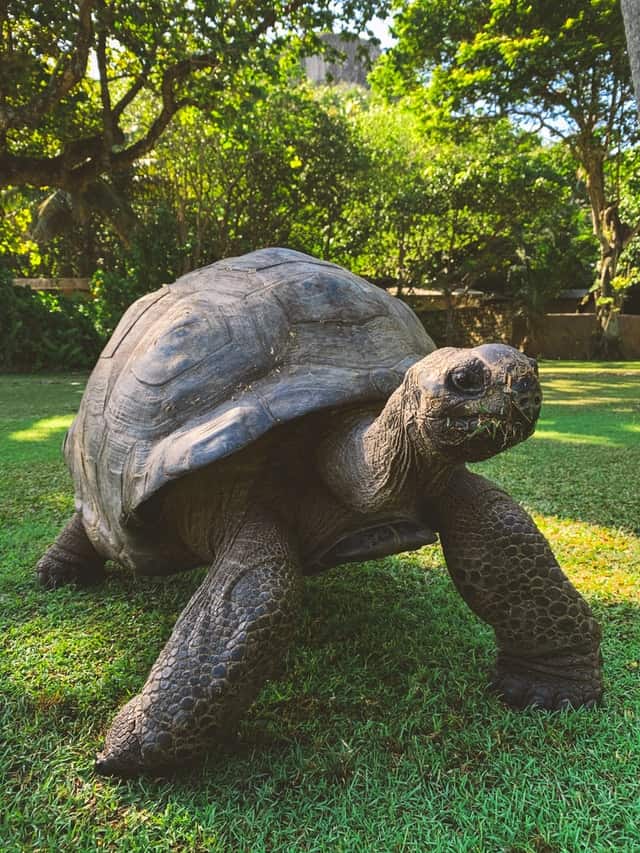
- Tortoise is the word referring to slow, terrestrial turtles.
- A tortoise’s shell is a composition of 60 bony plates. It’s heavier and more rounded.
- The top part is called a carapace and the underside is called a plastron. Both sides are joined by a bridge.
- Tortoises can hide their head, feet, and tail in their shell.
- A tortoise has a collarbone, ribs, and a spine inside its shell.
- Their shells are very sensitive. Tortoises can feel anything that touches their shells, even if you touch it very softly.
- Tortoises have no teeth so they chew their food using ridges in their tough mouths.
- Tortoises have no ears, but they have two tiny holes on the sides of their heads.
- Tortoises can smell even the faintest of scents.
- Tortoises are sensitive to bright colors.
- Tortoises have short, thick feet, and they can draw heat from the ground.
- They can’t swim, but they can hold their breath underwater for long periods.
- Tortoises are cold-blooded and get warmth from their environment. This is why they like sunbathing.
- Female tortoises are typically larger than males.
- The largest tortoise species is the Galapagos tortoise which can weigh up to 440 pounds and grow up to 1.2 meters long.
- The vast majority of tortoise species are found in semiarid zones. They can also inhabit deserts, grasslands, mountainsides, scrub forests, and dunes.
- Most tortoises are docile and tend to be shy.
- Tortoises are mostly herbivorous.
- Tortoises are often loners.
- A group of tortoises is known as a creep.
- A baby tortoise is called a hatchling.
- Female tortoises lay up to 30 eggs at a time in deep burrows that they dig and let the eggs incubate for 90 to 120 days.
- Tortoises are diurnal, meaning they’re active during the day and asleep at night.
- Most tortoises hibernate in the winter.
- The lifespan of a tortoise ranges from 90 to 250 years.
- Some tortoises are considered endangered or critically endangered, but the Angonoka tortoise is considered to be the most threatened tortoise on earth.
Terrapins
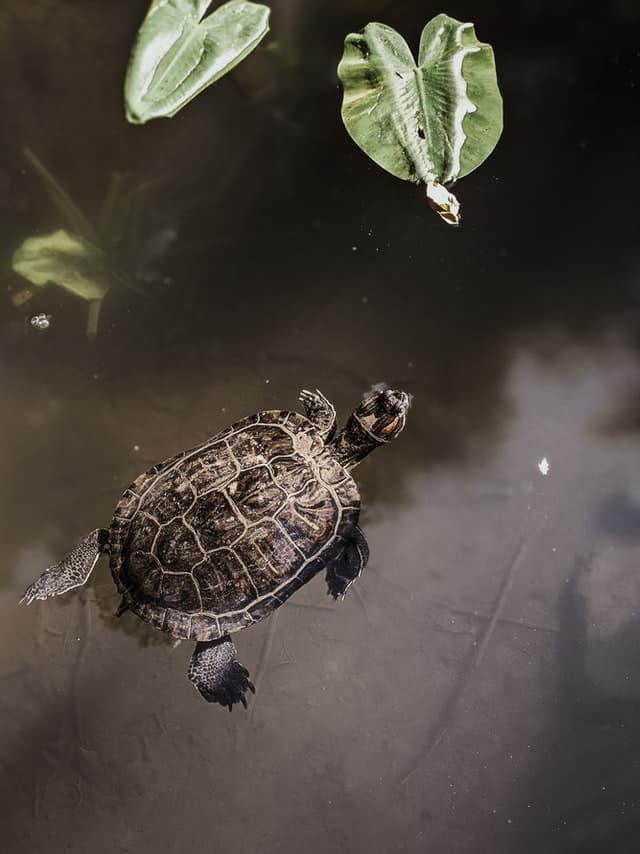
- A terrapin is a semi-aquatic turtle that lives in fresh or brackish water (a mix of salty and freshwater).
- You can find them in waterholes, ponds, and lakes.
- They are named for the diamond pattern on their shells.
- Their hard shell is slightly streamlined (like turtles) and also slightly domed (like tortoises).
- They don’t have flippers like a turtle, but legs like tortoises, but can swim very well.
- They are incredibly sharp claws on their feet.
- They are omnivorous. They eat crabs, small fish, insects, mollusks, algae, and other aquatic plants.
- Female terrapins look very different from males.
- Females are bigger than males. They measure nearly 7 inches and males around 4 and 5 inches.
- Terrapin is one of several small species of turtle, but there are some very big species like the American snapping turtle.
- They are aggressive and will bite.
- They do not have teeth but have an incredibly strong snapping jaw, that can take your finger off.
- They also make a sound similar to barking when angry.
How to Celebrate World Turtle Day with Your Preschoolers
There are many resources available to teach your children about turtles and tortoises, to encourage their love for these animals, and to create awareness for the future generation about the threats that these amazing reptiles are facing, and how to become their advocates and defenders the rest of their lives.
Some of the things that come to mind are:
- Bring a real turtle or tortoise to school, and talk to the children about its body parts and how to take care of it.
- Show them videos of turtles, tortoises, and/or terrapins, like the following ones.
- Have children dress up in turtle shirts.
- Have them dig “turtle eggs” ping pong balls out of the sensory table full of sand. You can add letters or numbers to the “eggs”, and have them say the name of the letter or number they dig out.
- Have them race as “turtles” (slowly).
- Provide mini turtles and invite them to make an aquarium using blocks or legos.
- Sing turtle songs. Preschool Express has several fun ones. You can find them HERE.
- Adopt a turtle from a shelter for your classroom or invite your families to do it. Multiple types of turtles can be great pets. Ten of the best ones are the Red-Eared Slider, African Sideneck Turtle, Eastern Box Turtle, Western Painted Turtle, Mississippi Map Turtle, Common Musk Turtle, Spotted Turtle, Yellow-Bellied Slider, Reeve’s Turtle, and Wood Turtle. You can see pictures and characteristics HERE.
- Go on a field trip to a park to watch turtles, or invite your families to do it.
- Turn your sensory table into an egg-finding site by burying ping pong balls (turtle eggs) in the sand. You can write letters or numbers on the balls, and have your children tell what letter or number they dig out.
- Do turtle art crafts. You can find 53 good ideas HERE.
Turtle-related Books for Preschoolers
Reading to your children about these reptiles is one of the best educational activities you can do to teach your kiddos about anything, especially if you use books filled with amazing pictures and illustrations.
Many books address these amazing animals, both fictional and non-fictional. You can find books about these great birds at your local library, used book store, and on Amazon. I added my Amazon links to make it easier for you. Just by clicking on the pictures.













Pin It For Later
If you are in a rush and don’t have time to read the post and download the printable but want to save it for later, pin it to one of your Pinterest boards for later.
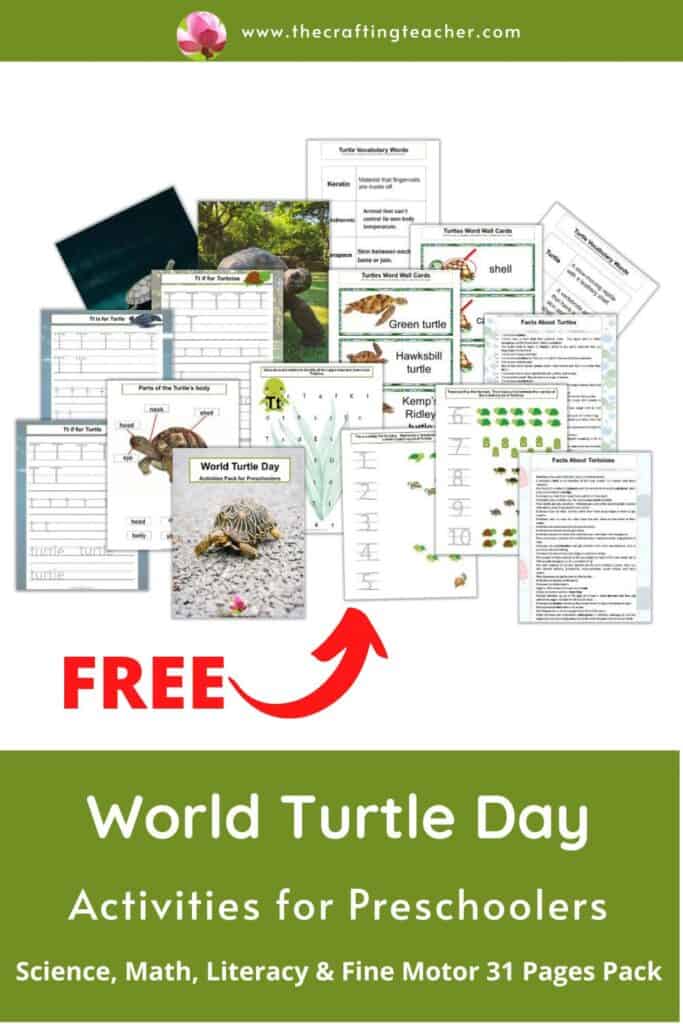
Turtles are among the most illegally traded animals. It is important that children get a better knowledge of turtles, tortoises, and terrapins, and you, as teachers and parents of preschoolers can encourage them to love, support, and protect these animals. This World Turtle Day make a vow to teach your children all of this, so they can become protectors and advocates for these amazing reptiles, conserve their habitats, and save their lives.
I hope you enjoy these ideas and help you have fun during the World Turtle Day celebration with your preschoolers. To get the FREE pack, you just have to click on the link below and put your information, for an immediate download.
Be happy, safe, and creative. I wish you well.
Love,

P.D. Please let me know if any of these ideas worked for you, or if you think I need to add or replace something. My goal is to help you in any way I can and I don’t like anything better than to post something that you might find helpful. Also, if you came up with different ideas and want to share them, I will love to post them as well.

